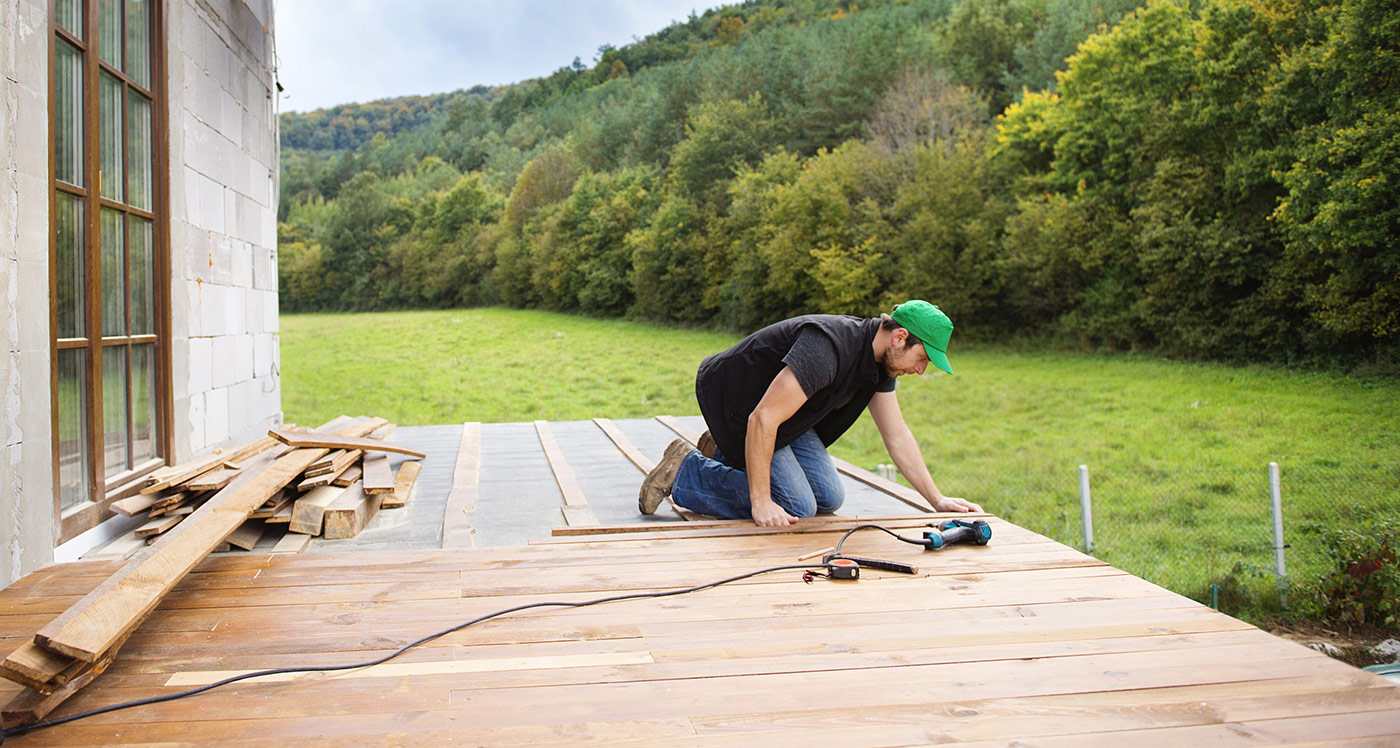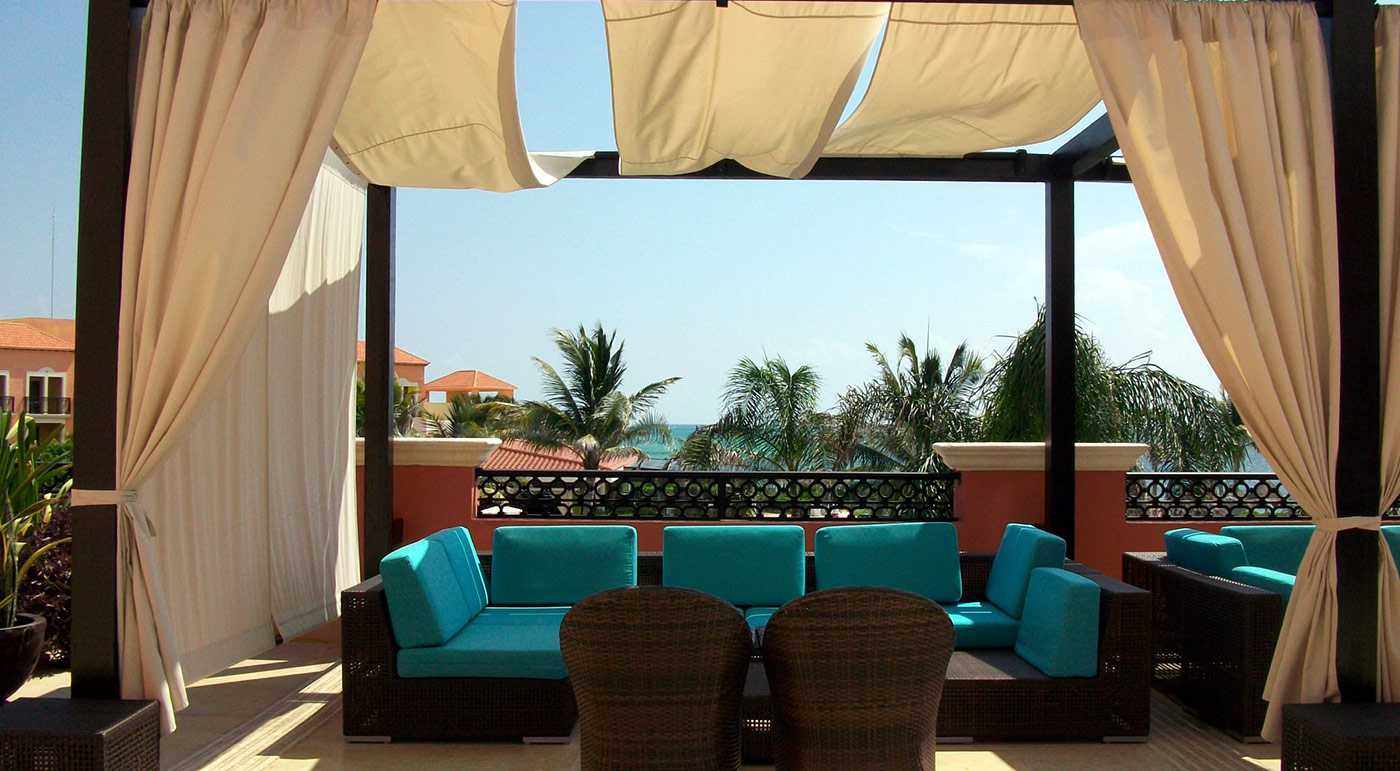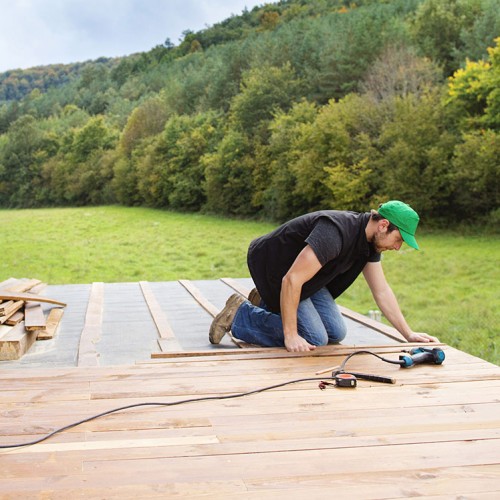What better way to enjoy your yard over the summer than eating a meal, drinking a cold one or just lazily lying about on your patio?
If you’ve got the soul of a handyman, you could save a lot of money by building it yourself, since it’s relatively simple. A patio is made up of:
- A foundation
- A base
- A floor
- Accessories and finishing touches (stain/sealer, flower boxes, handrails, stairs, etc.)
- Some hardware

If you’re looking to use your patio as a place to dry off between two swims, read our practical guide to buying a pool, as well as our guide on the proper way to take care of it.
Planning
You need to start your project with a plan. Feel free to browse the web for inspiration. Many sites even offer detailed blueprints for free.
The plan should account for the positioning of the trees and your optimal sun exposure. For example, you may want a portion of the patio to take advantage of the shade.
In order to visualize the final result, map out the surface of your patio with some rope. This will allow you to better calculate the amount of materials you will require. To prepare the surface, dig a few inches and level it out with compacted gravel to solidify the ground. This will also prevent unsightly weeds from peeking up through your patio.
Some hardware stores offer project guide services that will accompany you in planning out your project. The guide can help you estimate costs and draw up a list of materials.
Before starting anything, make sure that adding a patio to your backyard respects municipal bylaws (height, distance from neighbours, etc.). You may be required to get a permit.

Materials
2×8 pieces of lumber are usually used for the base. There should be 16 inches of distance between the joists. If the surface is relatively large, you should reduce the space to 12 inches.
The choice of materials for the floor depends mostly on your budget.
Except for lumber, most wood products are suitable for a patio. For a good quality/price ratio, treated wood is your best option, especially if you have a pool. Torrefied wood or exotic species can also do the trick.
Cedar is more expensive, but remains a very popular choice among Quebeckers. It requires little maintenance, and holds up very well to water.
Composite materials are also adequate, but it’s false to believe that they will require no maintenance.
The size of the boards is mostly a matter of design and look. However, if you are building a large patio, we recommend using wider boards.
To find out more on the foundation and the base, we suggest you consult a professional, as it can vary according to many factors.
Financing your project
If you’d like to find out more about the various ways to finance your renovations, read our article, “Borrowing more to renovate your home”.
Key takeaways
- You need to start your project with a plan. Feel free to browse the web for inspiration.
- In order to visualize the final result, map out the surface of your patio with some rope. This will allow you to better calculate the amount of materials you will require.
- The choice of materials for the floor depends mostly on your budget. Except for lumber, most wood products are suitable for a patio.

